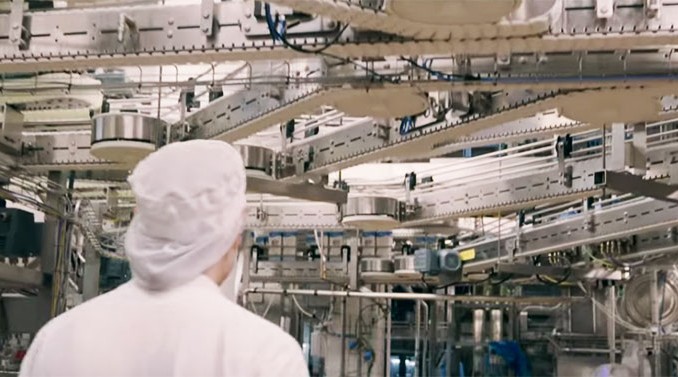
For most businesses, saving human and environmental resources has always been a high priority. But is it possible, at the same time, to increase productivity, lower your costs and improve the working environment? When it comes to production flow solutions, it is possible.
A demand-driven production generates less waste
It is possible to create automated production flow solutions that are friendly to the environment. By using a demand-driven production with minimal re-setting time, an automated system will generate less waste. Gentle handling and short throughput time lead to less scrap, and energy consumption is lower because of intelligent control and drive technology. A re-design of lines and long service life increase the chance of reusing an automated system. Another way of generating less waste and environmental footprint is to make compact designs which requires less space with lower fixed costs.
Lower noise and improved operator safety for better work environment
A well functioning working environment is important and is often high on the agenda. An important aspect when building automated production flow solutions is improved machine access and reduced walking distance for operators, combined with fewer stairs which lead to reduced risk for injuries. FlexLink develops systems with improved operator safety and clean and well-designed equipment with low noise.
Fewer conveyors will lead to reduced energy consumption
FlexLink compared two automated production flow systems in the tissue industry. The first system had 177 conveyors of different lengths and was based on conventional conveyor technology and line control. The second system was based on FlexLink technology and had 63 conveyors of different lengths and was based on a dynamic line control.
There are factors in the automated production flow that could be improved. Dislocated products, high energy consumption and noise level, product damages and waste, are a few examples. Fewer conveyors will lead to reduced energy consumption. Fewer transition points between the conveyors will reduce the risk of dislocated or damaged products, as well as reduce maintenance and noise level. A shorter overall conveyor distance will reduce the non-value-adding transportation.
Decreased power consumption in numbers
By comparing the first and second system it becomes clear how big the difference can be. In the first system, 60 percent of the conveyors need to run for a specific production set up, with each drive unit running constantly. In the second system, 75 percent of the conveyors need to run with a specific production set up, where harmonic drive enable each drive unit to run 60 percent of the time on average.
Basic calculations shows, the first system has a power consumption of 191 000 kWh, and the second system has a power consumption of 51 000 kWh.
Summary of advanced solutions for the manufacturing industry

There are many ways to build more sustainable automated production flow solutions. FlexLink develops systems by applying a variety of elements, and when combining these elements, it generates environmental friendly results. Using modular equipment design, makes the system re-usable and in that way causes a smaller negative impact on the environment. Below follows a summary of more tools FlexLink use when developing sustainable solutions:
For reduced energy consumption
- Compact innovative layouts with small space requirements
- Layouts with few and short conveyors
- High efficiency drive technology and low friction conveyors
For reduced waste
- Dynamic distribution, line-balancing and product manipulation for improved system efficiency and balancing downstream demand
- Gentle and safe product handling
- Short change-over time
- Long equipment service life
If you have any questions about automated production flows and sustainability, don’t hesitate to contact me. Stay tuned for more interesting news and facts on our blog, and don’t forget to visit FlexLink on Facebook, Twitter, LinkedIn, Youtube and Google+.




Leave a Reply